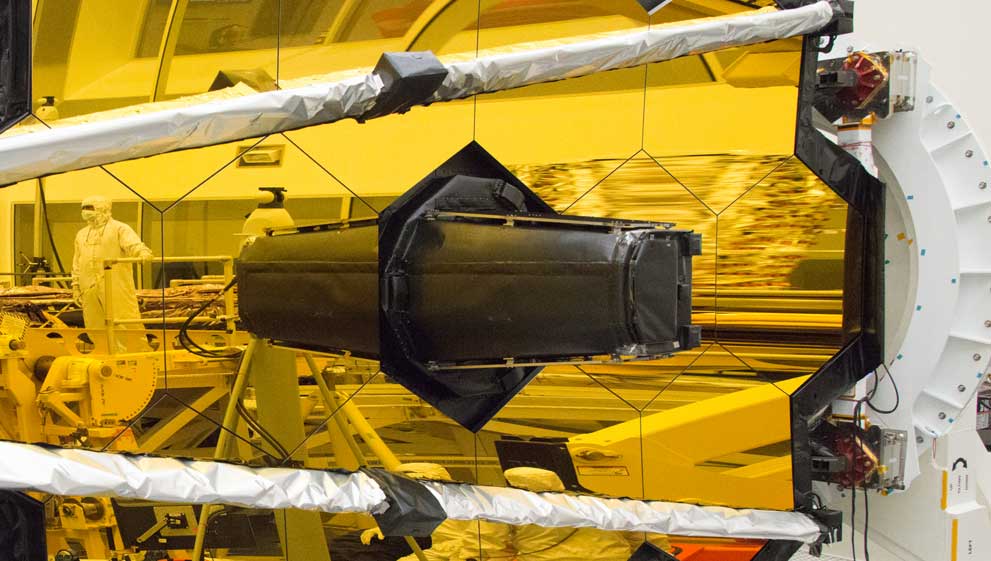Scientists discovered long ago that the best way to view the universe outside of our own solar system, was to send a telescope up into orbit, to avoid the haze of earths atmosphere. The first such device was the American Orbiting Astronomical Observatory OAO-2 launched in 1968. Numerous others have followed since, but one element that scientists have discovered is that a telescopes sensitivity, and the level of detail it can see, is related directly to the size of the reflective mirror it utilizes.
The James Webb Space Telescope uses a primary mirror that is 6.5 meters (21 feet 4 inches) across, and represents the largest such mirror ever launched into space.
The mirror is constructed from a total of 18 hexagonal segments formed from beryllium powder, however it is stainless steel that again is utilised to as a mould canister that the beryllium powder is pressed into, to form the necessary shape.Once formed, the stainless steel canister was remove,d and the resulting beryllium mirror was cut into two sections 1.3 meters (4 feet) across.
The James Webb Space Telescope (JWST or "Webb") is planned as the successor to the famous Hubble Space Telescope. The huge mirror will make the telescope so powerful, that scientists hope to be able to observe galaxies as far as 13 billion light years away from Earth – effective looking back in time to when these galaxies were young due to the duration if light travel at those distances.
Whilst we can’t guarantee our Stainless Steel Cupboards for 13 billion years, they are durable enough to last a lifetime, which is why we back them up with a full 25 Year Warranty!
Photo: Author James Webb Space Telescope. This file is licensed under the Creative Commons Attribution 2.0 Generic license.
